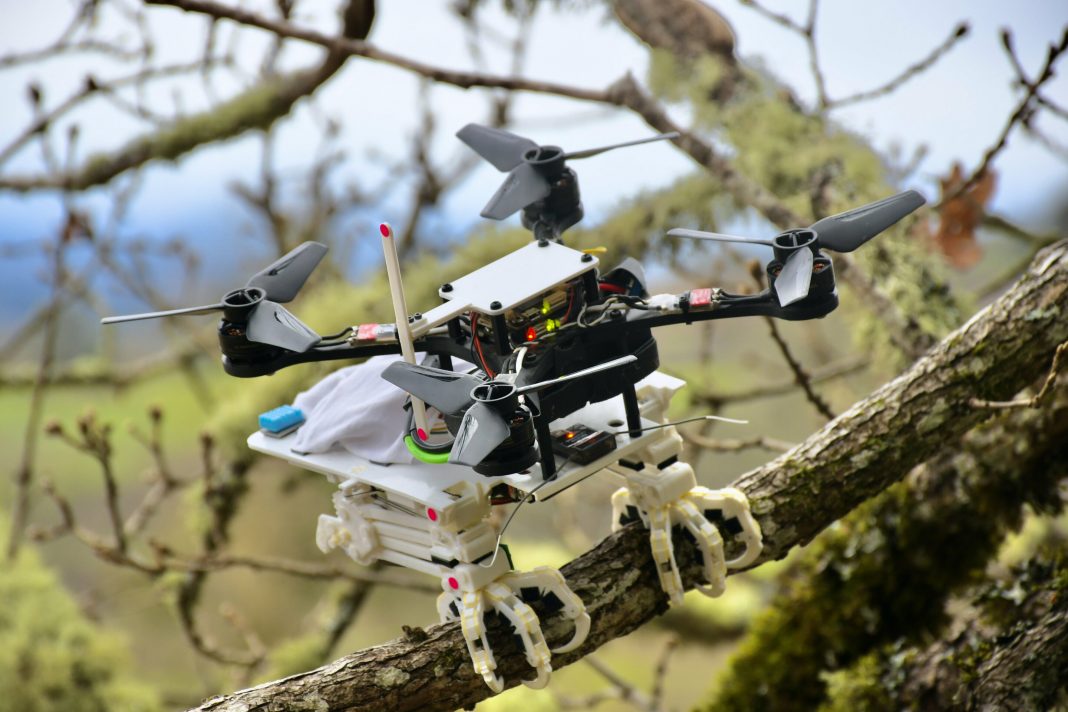Years of research at the Cutkosky Lab on animal-inspired robots and the Lentink Lab on bird-inspired aerial robotics led to the creation of their own perching robot, which was reported in a paper published in Science Robotics. Their “stereotyped nature-inspired aerial grasper,” or SNAG, is a robot that can fly around, catch and carry objects, and sit on various surfaces when coupled to a quadcopter drone. The researchers utilized this study to evaluate different types of bird toe configurations and assess microclimates in a remote Oregon forest, demonstrating its adaptability.
Parrotlets, the second smallest parrot species, flew back and forth between specific perches while being captured by five high-speed cameras in the researchers’ prior experiments. The perches, which came in a range of sizes and materials such as wood, foam, sandpaper, and Teflon, also had sensors that recorded the physical forces connected with the birds’ landings, perching, and takeoffs.
“What struck us was that they performed the identical airborne maneuvers regardless of the surface they were landing on,” Roderick, the paper’s primary author, said. “They let the feet deal with the surface texture’s diversity and complexity.” The “S” in SNAG stands for “stereotyped,” which refers to the formulaic behavior exhibited in every bird landing.
SNAG, like the parrotlets, takes an identical approach to each landing. SNAG, on the other hand, is built on the legs of a peregrine falcon to accommodate for the quadcopter’s size. It includes a 3D-printed framework that required 20 iterations to develop, as well as motors and fishing lines that serve as muscles and tendons.
Each leg has its own motor for moving back and forth and another to handle grasping. Inspired by the way tendons route around the ankle in birds, a similar mechanism in the robot’s leg absorbs landing impact energy and passively converts it into grasping force. The result is that the robot has an especially strong and high-speed clutch that can be triggered to close in 20 milliseconds. Once wrapped around a branch, SNAG’s ankles lock and an accelerometer on the right foot reports that the robot has landed and triggers a balancing algorithm to stabilize it.
During COVID-19, Roderick moved equipment, including a 3D printer, from Lentink’s lab at Stanford to rural Oregon where he set up a basement lab for controlled testing. There, he sent SNAG along with a rail system that launched the robot at different surfaces, at predefined speeds and orientations, to see how it performed in various scenarios. With SNAG held in place, Roderick also confirmed the robot’s ability to catch objects thrown by hand, including a prey dummy, a corn hole bean bag, and a tennis ball. Lastly, Roderick and SNAG ventured into the nearby forest for some trial runs in the real world.
Overall, SNAG performed so well that the next steps in development would likely focus on what happens before landings, such as improving the robot’s situational awareness and flight control.













